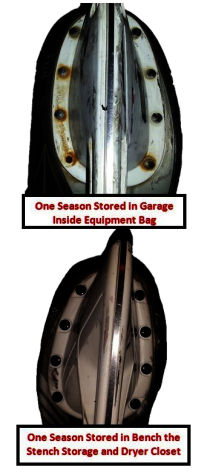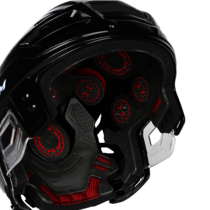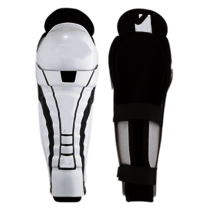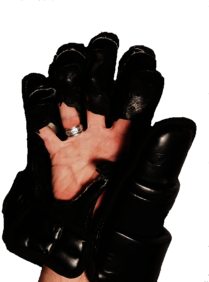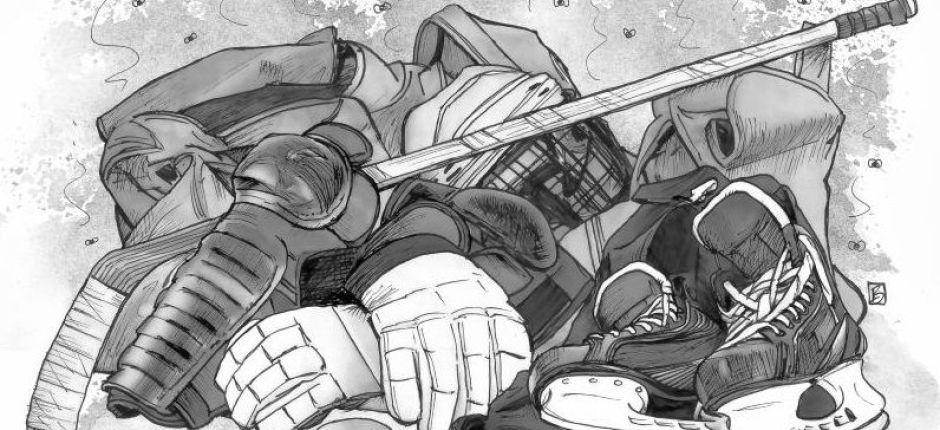

Play safe: Avoid premature equipment failure and personal injury
Protective equipment is required and is an expensive investment when participating in a contact sports such as hockey, football and lacrosse. Properly maintaining the equipment ensures that you get optimum lifespan, get the protection the equipment is designed to deliver and avoid any serious injury while playing. Owning and using a Bench the Stench storage and drying system for sports equipment can instill the habit causing you to properly maintain your equipment so that you can play using dry, warm and safe equipment each time you step on the ice.
Protect yourself from serious injury and extend the life of your expensive pair of skates
Hockey players know that their skates are the most important and most expensive piece of equipment they own. It is also the equipment they are least likely to want to replace as breaking in a new pair is usually an uncorfortable and painful process. The premature need for replacing a pair of skates is largely due to a player neglecting to properly maintaining their skates.
Skates must be allowed to dry between use for the following reasons:
- to ensure that the fabrics, stitching and glue used in the construction of the boot dry fully to avoid premature deterioration or rotting.
- to prevent rusting of the retaining rivets used to secure the blades to the boot.
In the event that the boot material, glue, stitching and the retaining hardware are adversely affected, the skates can compromise a player's skating abilities and contribute to an unsafe situation causing an accident that can lead to a serious injury.
A player must regularly examine the bottom of their skates looking for any evidence of rusty, lose or missing rivets as well as inspecting the surface area where the skate blade is revited to the boot (usually the front of the boot just below the toe area) for cracks in the bottom of the skates, deteriorating material and stiching and damage to the blade holder.
Owning a "Bench the Stench" storage and drying system contributes towards extending the life of a pair of skates as the storage process encourages the player to regularly inspect their skates while they are storing them in the closet. Separating the insoles from the skates and properly adding them to the recommended area for drying within the closet removes/dries any mositure before any serious damage is done to the skates..
Serious head injury protection is only as good as the helmet and the maintenance it gets
The Helmet is the most import piece of protective equipment worn by people paticipatring in a contact sport such as hockey, lacrosse, baseball, skiing, snowboarding, etc... Everyday there seems to be a new report documenting an ongoing increase in concussion incidences or on the effects that concussions have on the players well after one's playing career is over. Wearing a helmet is almost mandatory in most contact sports to ensure that the potential for a head related injury is significantly reduced.
Wearing a compromised helmet may be as bad as not wearing one at all. The protection provided by a helmet is determined by the condition of the impact resistant plastic outer shell, the condition of the screws and attachments, and the preservation of the foam cushion layer mounted within the helmet itself.
Proper care of a helmet requires that:
- the impact resistant plastic outer shell not be exposed to a high heat source. Exposure to heat can alter the plasticizers used in the manufacture of the helmet's outer shell potentially making the helmet's plastic outer shell brittle and suceptible to cracking.
- storing a helmet in an unheated garage or garden shed can cause the metallic attaching hardware to corrode. The metal rivets and screws used to assemble the helmet and metal cage or plastic visor must be free from rust and secured tightly to provide the optimum level of protection.
- the foam insert mounted inside the helmet provides a safety cushion for a player's head in the event of an impact. The foam insert is designed to absorb the impact to the head from sticks, pucks and player collisions. Exposing the foam insert to a high heat source can also cause the foam insert within the helmet to shrink, potentially losening the fit and decreasing the level of available protection.
Bench the Stench provides a controlled storage and drying environment for sports protective gear using only high speed air circulation system and anbient room temperature air (68 - 72 degrees Fahrenheit / 20 - 22 degrees Celsius) to dry the equipment. The Bench the Stench system provides an ideal storage and drying environment for sports equipment manufactured using plastics and foam to retain the original form and provide the safety that they were designed to deliver.
Shin Pads ... the most active impact area for a player
Shin pads or knee pads as they are most commonly known, have been around as long as the game has been around. Having a solid rubber object like a hockey puck hurled towards at you at high speed can and most likely will deliver a great deal of pain if the knee pads are not in top form. The pads are constructed using an impact resistant plastic outershell along with a padded inner layer attached to the inside edges of the pad and suspended away from the forward facing plastic outer shell. This gap between the material and the plastic outer shell creates a deflection area tho allow the protective shin area if the plastic shell to flex inward towards a player's shin, maintaing the gap and absorbing the impact without making contact with the player's leg.
It is important to always keep the plastic shell and padded inner material dry to prevent any rotting of the stiching and the material. Failure of the sitiching and/or padded material can cause a loss in the gap used in the deflection area between the outer shell and the padding which could lead to a serious leg injury. Since the outer shell of the shin pad is constructed of impact resistant plastic, the plastic pad should not be exposed to a high heat source as this could cause the dplaticizers used in the construction of the shin pads to dry out and crack potentially not providing the protection originally intended.
The Bench the Stench storage and drying system uses only ambient room temperature (68 - 72 degrees Fahrenheit /20 - 22 degrees Celsius) to dry the sports equipment, a temperature that does not cause any damage to plastic and other materials used the overall construction of the knee pads.
Glove Me Tender
Hockey gloves are designed to provide protection from injury for a player's hands and wrists and allow the player the ability to stick handle the puck as if they were using his bare hands. The gloves get very damp during a game due to perspiration. The major issue with gloves is that if they are not properly cared for, the palms will wear out prematurely, and a player will either have to have the palms of the gloves replaced or buy a new pair gloves.
Using a Bench the Stench storage and drying system for a hockey player's gloves ensures that the gloves are allowed stored to dry properly The Bench the Stench storage and drying system positions the gloves directly over the air circulation system to cause a low pressure area is created below the gloves to allow the moisture and odour causing bacteria to be drawn out of the gloves. This process permits the gloves to dry naturally and slowly so keeepingt the glove palms soft and pliable.

